Nia: Unleash Your Happy Warrior
Nia combines yoga, martial arts and dance.
On a day saturated with humidity, intense bouts of warm rain came and went as though wrung directly from the muggy air. With rivulets of perspiration streaming down our backs and legs, hair glued to our scalps, we exploded from the Ecology Retreat Centre’s dance studio in Hockley Valley. Our group of about 20 women ran barefoot through the wet grass. Arms waving over our heads and squealing like 10-year-olds, we galloped willy-nilly as the rain washed away our salty sweat.
It had been decades since I had last run outside in warm rain and it felt … well, liberating and joyful and fun and all those clichéd phrases that fill women’s self-help books. If this was “being in the moment,” then I was all for it. I was the willy-nilliest of all!
My experience was part of a three-day Nia retreat organized by Mary Baxter, who runs the Born to Move studio in Georgetown, and her fellow instructor Sarah Butler. The practice of Nia involves routines that are set to music, weaving together modern dance, martial arts and yoga into intense full-body workouts. Nia originally stood for “non-impact aerobics,” but this description is both inaccurate and misleading.
When we emerged from the retreat centre’s studio, our slick bodies were the result of having just completed what I would refer to as an hour-long Nia “dance” called The Craft of the Warrior. Encompassing various songs that ranged from powerful to heart-wrenching to relaxing, the dance bore no resemblance to the workouts made famous by Jane Fonda. No rigid moves pounded out to thudding tunes.
The Craft of the Warrior is carefully and creatively choreographed to reflect the teachings in Robert L. Spencer’s book of the same name, which embraces the ideas of, among others, Carlos Castaneda. According to a summary on the publisher’s website, “The warrior’s way leads from compulsion to freedom, from boredom to adventure, and from darkness to awareness.”
Now, if this sounds much too New Age for you, believe me, I understand. It was a great workout and really, really fun, but it didn’t lead me from compulsion to freedom or from boredom to adventure or from darkness to awareness. Or did it? Who was that person running screeching with other half-naked, barefoot women through wet grass in a rainstorm?
Had I read what I’ve just written before agreeing to attend this Nia retreat, I might have avoided the event like the plague. And indeed, Nia isn’t for everyone. But if you love a good workout, sometimes find yourself enveloped in music, and have been known to turn up the volume a notch or three and bust a few moves in your living room when you think no one is watching, then keep reading, sister.
Baxter writes on her website: “Fall in love with feeling good and the joy of movement.” What she doesn’t write, but what’s obvious when you take her Nia class, is that she’s in tune with her body – and her music. At times, the routines are sensuous, and the sway of Baxter’s hips and midriff would be the envy of many a Latin salsa dancer. Inspired by yoga and the martial arts, the routines involve moves consistent with the way your inner you has always wanted to interpret Etta James’ version of “At Last” or Leonard Cohen’s “Dance Me to the End of Love.”
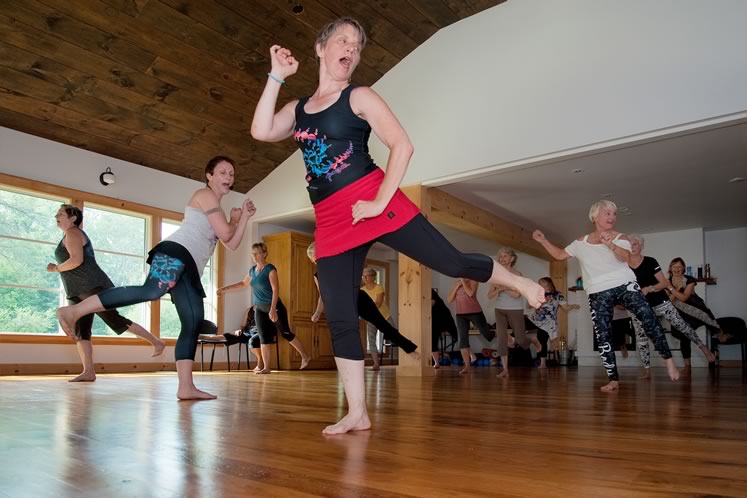
Mary Baxter (centre) and her co-instructor Sarah Butler (centre left) lead a Nia session at the Ecology Retreat Centre: “Fall in love with feeling good and the joy of movement.” Photo by Rosemary Hasner / Black Dog Creative Arts.
Powerful and purposeful, the routines evolve from our “inner wolves.” As Sarah Butler led The Craft of the Warrior, we mimicked the determined action of shooting a bow and arrow, and we struck straight-line poses as we thrust our make-believe swords high into the air. Then we twirled on our tiptoes with an imaginary feather-weight cape ballooning around us and curtsey a greeting to our fellow dancers.
Maybe you have to experience Nia to appreciate it. Maybe without an instructor who is simultaneously playful and strong and fit and utterly comfortable in her body, the idea falls flat – like eating chocolate with a head cold. Maybe reading about Nia without music flooding your senses makes those of us less comfortable in our bodies a wee bit uneasy.
At the retreat’s end, my fellow dancers described the experience as empowering, revealing, grounding, sensual, inspiring and liberating. One participant said she felt “unleashed.” Others talked about feeling as if they were part of a community. They felt content and accepted. Forgotten was the notion that Nia is an amazing way to improve fitness, flexibility and strength. I don’t think anyone recalled how much of a sweat they’d worked up. There was no mention of joint pain, probably because the practice is low impact; and no one complained of aching muscles, though many must have had them. Instead, we were left with the euphoria of movement and the joy of playfulness. I found myself laughing out loud for no particular reason.
“It takes courage to be playful, yet such power comes from it,” Baxter says. “I began practising Nia and after class I felt so good.” Over time, she explains, that euphoria extended and extended. “Fifteen years ago,” she says, “I was slated for knee surgery.” But she avoided having to go under the knife by practising the 52 moves that make up Nia as well as by undertaking some associated healing practices. “When you can dance through life,” she asks, “who needs hash brownies?”
Related Stories
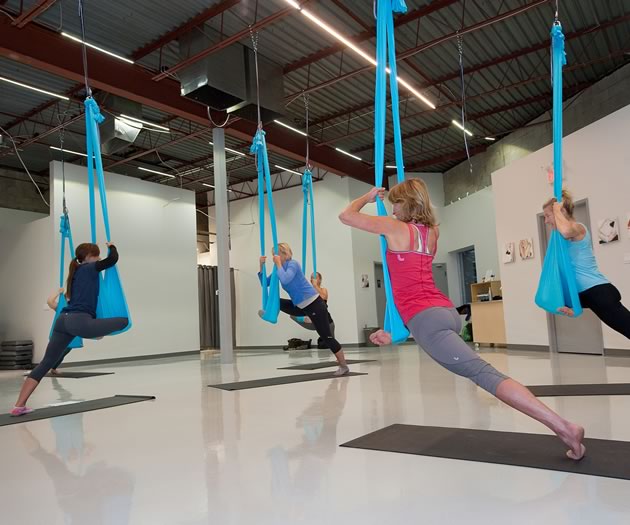
Fusion Workouts
Nov 22, 2016 | | Good SportMix & match, fusion workouts take the “same old” out of exercise.
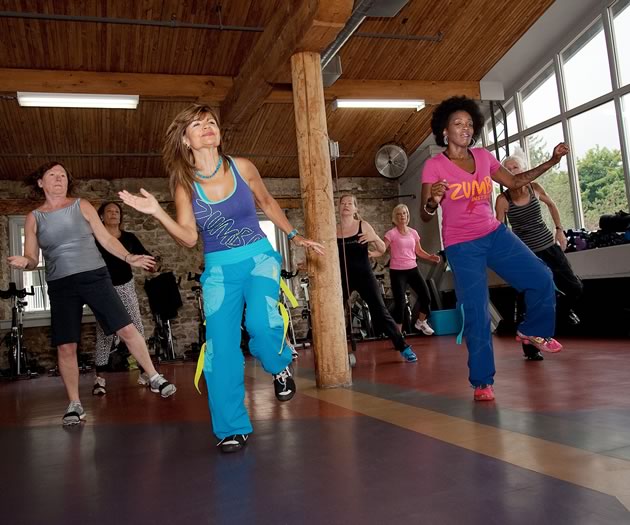
Zumba – Party Your Way to Fitness
Sep 11, 2015 | | Good SportGet off the treadmill and join the Zumba craze!
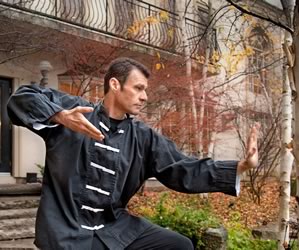
Qigong: Going with the Flow
Nov 16, 2012 | | Good SportQigong involves repeating exercises – some very simple and others much more rigourous – meant to get chi flowing. Specific exercises affect different areas of the body, allowing a practitioner to focus on particular problems and self-heal.
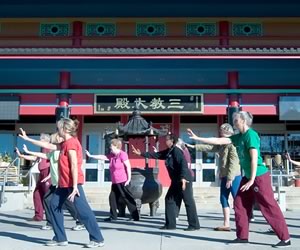
A Path to Stillness, Clarity and Wisdom
Nov 19, 2013 | | Back IssuesThe International Tai Chi Centre in Mono draws people from around the world to practise the ancient art.







